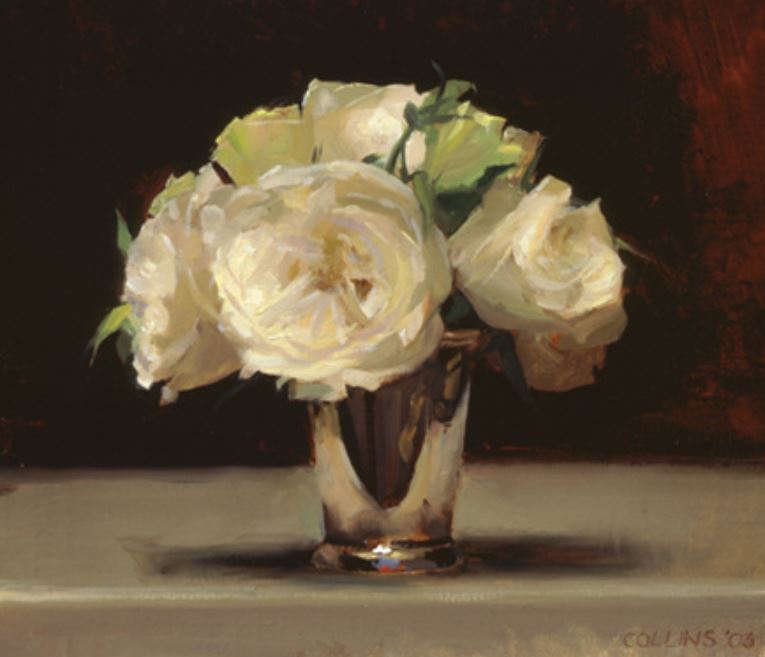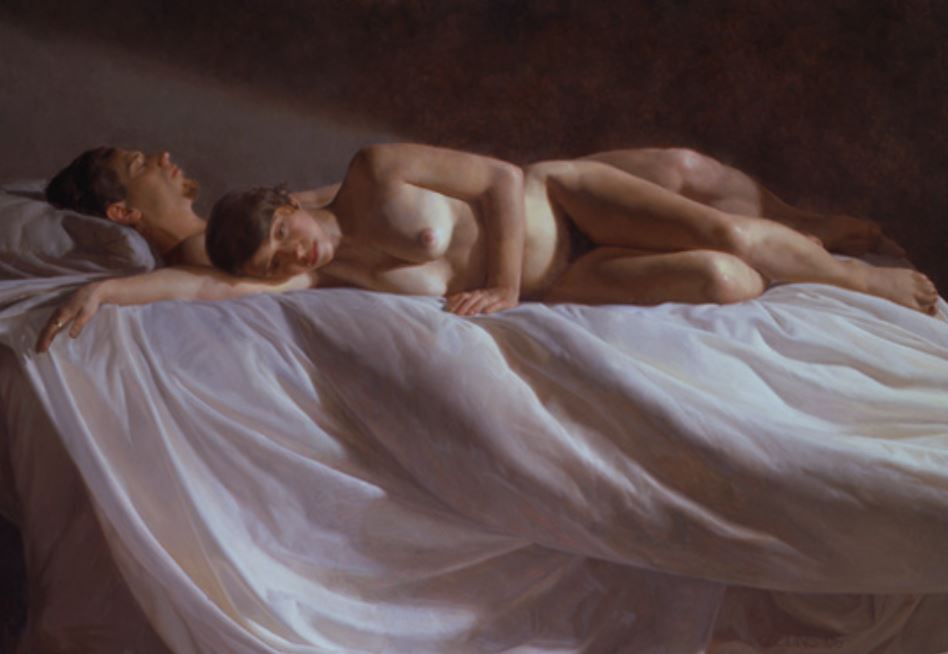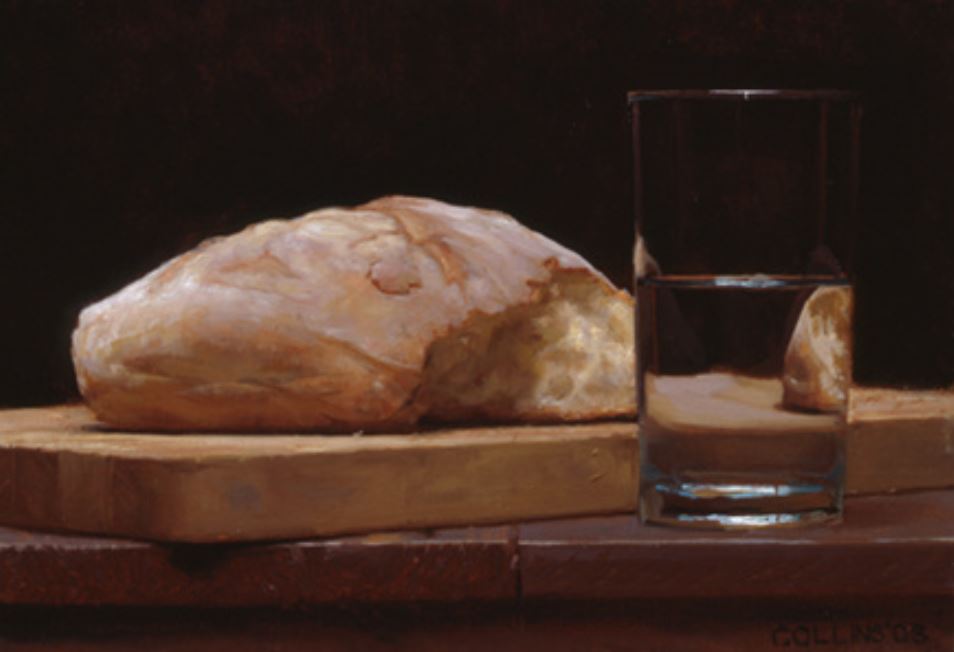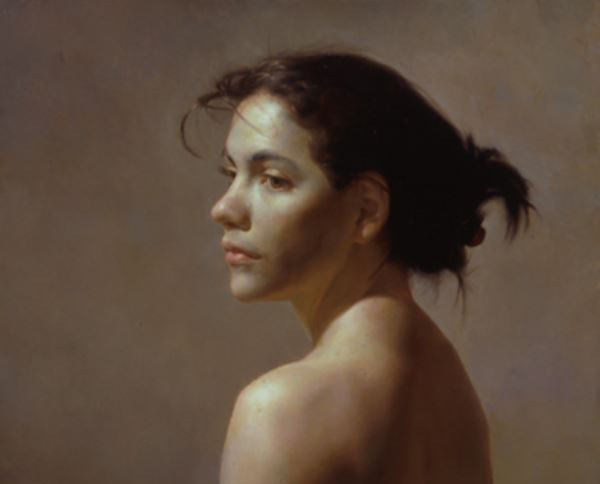Jacob Collins desires nothing less than to revive a classical art culture in our time. See why he’s “going back to find the larger organizational principles of art.” Collins was on the faculty of the 2nd Annual Realism Live virtual art conference.
A Classical Realist Who Thinks Ahead
BY RACHEL WOLF
I have been occupied for some time past with a work which is of immeasurable greatness. I cannot tell today whether I shall bring it to a close. It has the appearance of a gigantic dream… — Theodor Herzl, 1895
Jacob Collins could be said to be as much of an impossible dreamer as Theodor Herzl (1860–1904) was the year before he published his 1896 treatise outlining his vision to restore a Jewish state in the ancient homeland. Collins desires nothing less than to revive a classical art culture in our time. He is working with artists of every discipline — in his own words, “going back to find the larger organizational principles of art.”

The collector Gregory J. Peterson has described Collins as being “at the forefront of contemporary realism,” and many in the art world today agree. The respect that Collins has won in his native New York and beyond is demonstrated by the high prices his modestly scaled works command. His 2004 exhibition at Hirschl & Adler Modern on the Upper East Side sold out quickly, and another show of works there generated an unusual degree of anticipation in his urbane city.
Born in 1964 and raised in Manhattan, Collins developed an artistic vision very early. As a child he sketched pictures by such Old Masters as Vermeer, Velázquez, and Rembrandt in the Metropolitan Museum of Art under the watchful eye of his grandmother, Alma Binion Cahn Schapiro, who trained as an artist in Paris. His love for, and skill in, classicism was nourished by his family (his great-uncle was the renowned art historian and critic Meyer Schapiro), yet his set of concerns did not seem to have much currency in Collins’s own generation. Undaunted, he pursued his passion, attending the New York Studio School and Columbia College in New York. In 1987, he enrolled in the New York Academy of Art to learn Old Master techniques, then moved to L’Ecole Albert Defois in France.

Collins’s first solo show took place in 1990 at the Union League in New York, and since then he has presented approximately 20 solo shows and numerous group exhibitions at galleries in the U.S., Europe, and Canada. He has been commissioned to paint portraits of such personalities as J. Paul Getty Jr., George H. W. Bush, and Chief Justice Warren Burger, and his work is already in the collections of several American museums and institutions.
“As a traditional painter, I would always try to paint all the traditional subjects such as portraits, landscapes, and still lifes, with the occasional interior scene. But after the last show, it seemed that it would be a challenge to do a show that was entirely one genre, and particularly challenging and gratifying to do the hardest one —the figure. So I threw myself into it. In the past, I had a little feeling that I always had an outlet — that is, to work on different things, to break it up. This time I had to really focus in. . . . I’ve been thinking,” he says, “that the classical tradition is all about the figure after all.”

In 2006, Collins founded the Grand Central Academy of Art with a group of fellow artists “whom I hold in the highest regard,” he says. “They are all alumni of my first school, the Water Street Atelier, and helped me make it what it has been for more than a decade: a place where serious students can acquire the foundation of a classical education.”
Learn more about Jacob Collins: http://www.jacobcollinspaintings.com
Article reprinted with permission from Fine Art Connoisseur magazine
Learn how to draw the figure with the PaintTube.TV art workshop by Jacob Collins, “Sculpting the Figure with Pencil”






Jacob could be a traditional painter from the perspective of interest in subject matter but my thinking
is that that is where traditionalism stops with him. He is probably more accurately identifiable as a
modernistic realist. He has been taking/driving realism to the next level, far as I can see. I would not
know for sure but from what I can see, it seems as thou his technique in developing a work of art, is
very soundly based on the principles of traditionalism but the development to the conclusion of work,
is much more the result of either his own intellectual intuition or the product of his own brains
intellectual and emotional superior analytical abilities and intense emotional disposition. From the very
far off South Africa, where I live, it seems as though he is setting a new standard of (for) oil painting.
His works are absolutely always most impressive.
Comments are closed.